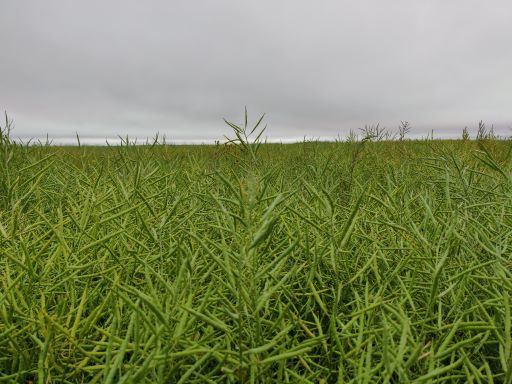Released on August 15, 2019
Despite rain delays in some areas, producers now have over one per cent swathed or ready to straight-cut, and less than one per cent of the 2019 crop combined according to Saskatchewan Agriculture’s Crop Report.
The five-year (2014-2018) average is four per cent combined and five per cent swathed or ready to straight-cut. Seventeen per cent of the fall rye, 14 per cent of the winter wheat, three per cent of the field peas and one per cent of the lentils are now stored in bins.
Harvest progress is most advanced in the southeast and southwest regions where one per cent of the crop is now combined. Producers in the central regions and north have less than one per cent of the crop in bins and expect to be harvesting in the coming weeks.
Rainfall last week delayed harvest operations in the southern regions. Rainfall ranged from trace amounts to 82 mm in the Pense area.
Provincially, topsoil moisture on cropland is rated as three per cent surplus, 78 per cent adequate, 17 per cent short and two per cent very short. Topsoil moisture on the hay land and pasture is rated as one per cent surplus, 72 per cent adequate, 25 per cent short and two per cent very short. The recent rainfall may cause downgrading and quality issues in pulse crops.
Hay yields are below average overall. Estimated average dryland hay yields for the province are 0.9 tons per acre for alfalfa; one ton per acre for alfalfa/bromegrass; 0.8 tons per acre for other tame hay; 0.7 tons per acre for wild hay and 1.8 tons per acre for greenfeed.
Estimated average irrigated hay yields are 2.4 tons per acre for alfalfa; 2.2 tons per acre for alfalfa/bromegrass; 1.9 tons per acre for other tame hay; 1.2 tons per acre for wild hay and 3.2 tons per acre for greenfeed.
The majority of crop damage this week was from strong winds and localized flooding. Producers are busy hauling bales and grain, getting ready for harvest and desiccating and combining crops.
A complete, printable version of the Crop Report is available online at www.saskatchewan.ca/crop-report. Follow the 2019 Crop Report on Twitter at @SKAgriculture.
-30-
For more information, contact:
Cory Jacob
Agriculture
Moose Jaw
Phone: 3066943587
Email: cory.jacob@gov.sk.ca

